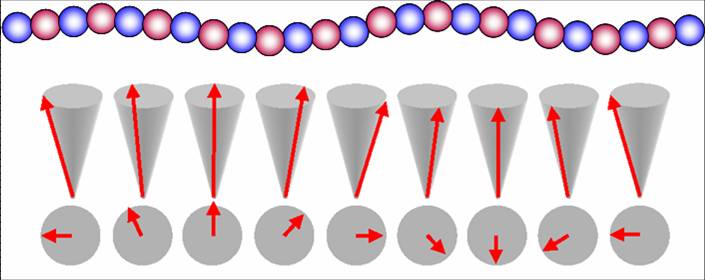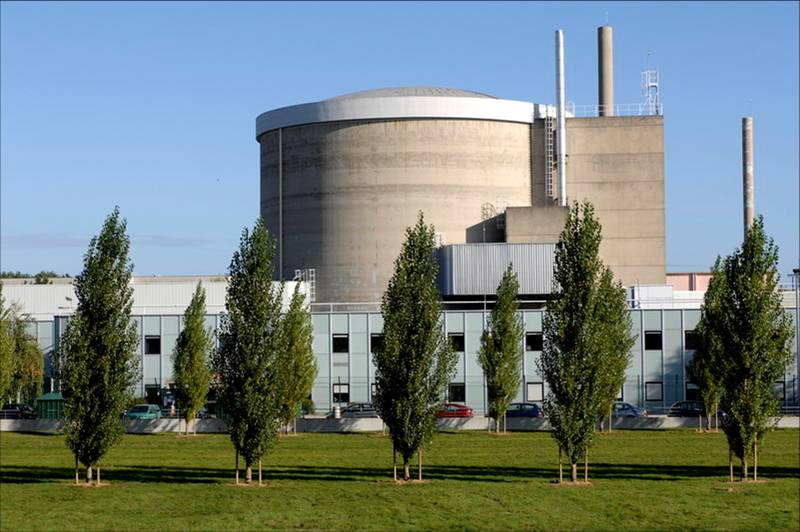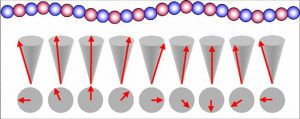S. Petit, F. Moussa, M. Hennion et S. Pailhès (DRECAM/LLB CEA-Saclay)
L. Pinsard-Godard, Laboratoire de Chimie du Solide, Paris XI
A. Ivanov, ILL, BP 156 F-38042 Grenoble
Multi-ferroïcs are exceptional materials whose fundamental state is both magnetic and ferro-electric [1]. Moreover, in such materials, magnetism and ferroelectricity maintains close links: as for example the manganese oxide YMnO3 [2], can see its magnetization modified by the action of an electric field, or its electric polarization by the action of a magnetic field (magnetoelectric effect). Muli-ferroïcity is a complex problem in physics of condensed matter; it also represents an important stake for the applications, and for example for “technologies for the information and health” developed at the CEA (development of new concepts of memorizing the information or spin electronics).
The last research on these materials tends to show that the coupling between magnetism and ferro-electricity occurs via important deformations of the crystal lattice. It is known for example that in the case of the compound YMnO3, the transition (TN = 72K) towards the magnetic phase (and thus multi-ferroïc) is the seat of magnetostrictive effects that reveals the strong coupling between atomic displacements, magnetic ferroelectricity and moments.

Beyond these “static” effects, scientists of the Laboratory Leon Brillouin (LLB) in collaboration with the Laboratoire de Chimie du Solide of Paris XI university, were interested in the dynamic effects, i.e. with phonons (waves, or deformation eigenmodes of the lattice) and magnons (waves of precession of the magnetic moments). Neutron diffusion experiments, realized within the LLB, are the good tool for such studies since neutrons have the great advantage to be sensitive to both space and magnetic order. Thanks to an energy analysis, these experiments allow to measure the energy transfer associated to the creation of phonons or magnons and thus to measure the associated dispersion curves. Scientists within the LLB were more particularly interested in a specific phonon mode, allowing to indirectly probing the ferroelectricity. Indeed, this mode corresponds to a vibration of the atoms in a direction parallel with that of the dipole moments. In the case of YMnO3, whether in the multi-ferroïc phase, the phonon dispersion curve exhibits a gap. This phenomenon could represent a dynamic modification of the lattice structure, favourable to the magnetic order as well to the ferro-electric order.

Pointing out this dynamic coupling, via the deformations of the lattice, enlighten our knowledge of the multi-ferroïc materials. Such a comprehension of these mechanisms remains however an essential stage before the design of concrete applications for these particularly rare and original materials.
Reference :
S. Petit, F. Moussa, M. Hennion, S. Pailhès, L. Pinsard-Godard and A. Ivanov, Phys. Rev. Lett. 99 (2007) 266604.
[1] Ferroelectrics have a permanent electric dipole moment (due to a shift of the electronic cloud (negative charge) with respect to the network of the positive atomic nuclei), even in the absence of an external electric field.


